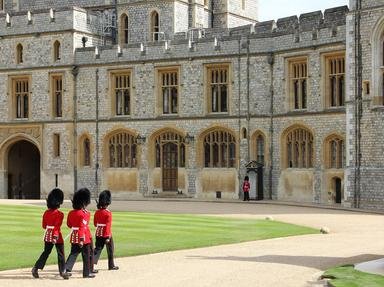Quiz Answer Key and Fun Facts
1. James Stuart was born at St James's Palace in October 1633, the second surviving son of King Charles I. Three years later, he was appointed to the post of what?
2. In 1648, during the English Civil Wars, James escaped imprisonment by disguising himself as a woman. To where did he flee?
3. James is frequently noted for his military service, and fought in several different armies. Which of the following did he NOT serve in?
4. On 3 September 1660, approximately four months after his brother Charles was proclaimed king, James married the daughter of which prominent member of the court?
5. In 1664, James was granted a significant amount of territory in North America. Which of the following settlements is NOT named after him?
6. In 1665, James was in command of the Royal Navy, and fought at the first major naval battle of the Second Anglo-Dutch War. This took place off the east coast of England near which town?
7. During the Great Fire of London in September 1666, James was appointed by his brother to lead the firefighting effort. However, he was also required to undertake what other task?
8. In the late 1660s, James undertook a conversion to Roman Catholicism. His religious beliefs made it impossible for him to swear an oath that was later required of all public officials. Under which Act was this oath taken?
9. In 1683, plotters intended to assassinate both the King and the Duke of York in what became known as the "Rye House Plot". The plan was to attack Charles and James during their return to Whitehall Palace, but from where were they travelling?
10. Despite previous opposition to James's succession as king, he came to the throne without incident on the death of his brother in February 1685. In July of the same year, however, an attempt was made to overthrow the new king. Who led the planned rebellion?
11. In 1688, Prince William of Orange was invited by a group of notables to invade England and overthrow the King. James had assembled a seemingly overwhelming force on Salisbury Plain to counter the invaders, but before battle could commence, the King suffered a debilitating health issue. What was it?
12. The "Glorious Revolution" replaced James as king with his son-in-law and daughter, Prince William and Princess Mary of Orange. Although James never officially abdicated, it became apparent that he could no longer remain and thus he fled from England. What did he dispose of when he set off?
13. The ultimate cause of James's removal was the birth of his son, James Francis Edward, in 1688, his previous sons having all died in infancy. How many of his legitimate children survived to adulthood?
14. Having fled London, James was welcomed in France by his cousin King Louis XIV, who provided him with a residence. What was this called?
15. James died in exile on 16 September 1701. What was the cause of his death?
Source: Author
Red_John
This quiz was reviewed by FunTrivia editor
bloomsby before going online.
Any errors found in FunTrivia content are routinely corrected through our feedback system.
